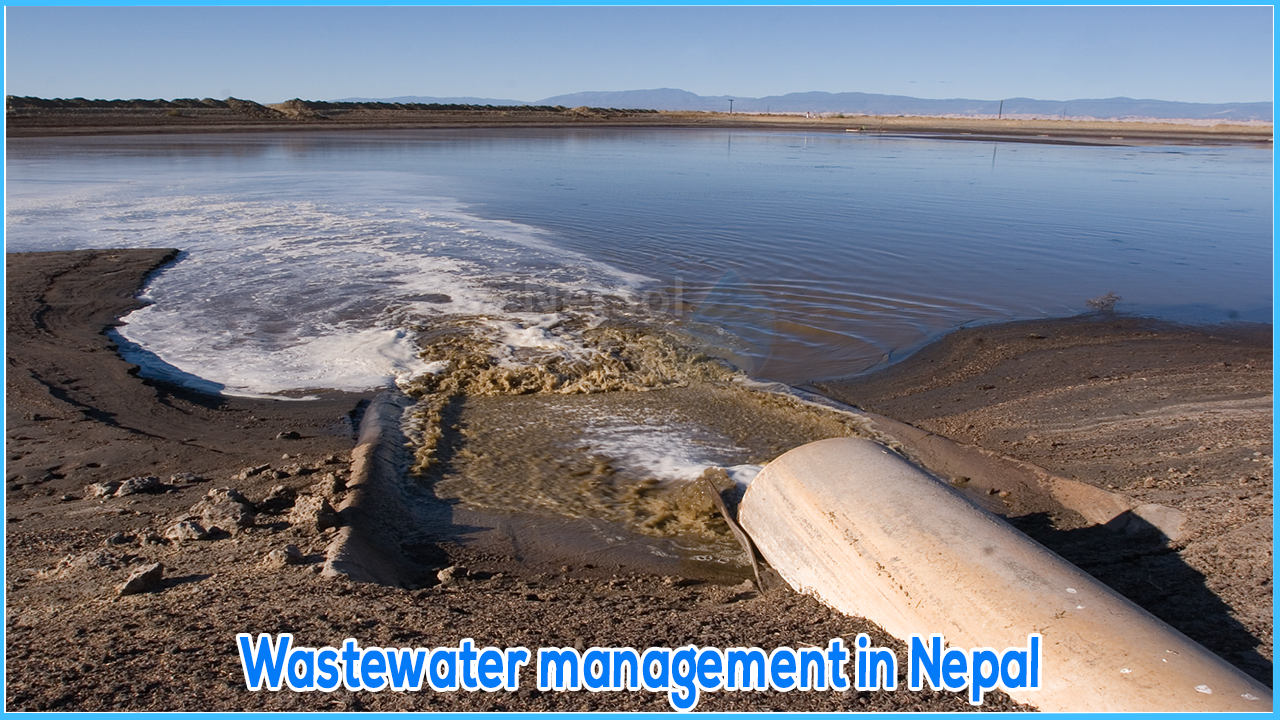High capital investment, high operations and maintenance expenses, system complexity, a shortage of replacement parts, and a lack of competent resource workers are all important causes of failure. It opens up the possibility of using decentralised systems for wastewater reuse and resource recovery. This report focuses on the state of wastewater treatment units in Nepal, as well as the potential for long-term decentralised wastewater systems that include engineered wetlands.
Waste water management practices in Nepal
Wastewater, which has been critically exaggerated as a result of anthropogenic influence, has been noted to have increased significantly in Nepal since 1970, particularly in urban areas, due to a high rate of urban population growth, as well as disorganised expansion of infrastructure and services for water supply, sanitation, and wastewater management.
Discharging untreated sewage, home garbage, industrial waste, and municipal waste into aquatic areas without sufficient treatment is a common waste management practise in Nepal. Wastewater is dumped into water resources around the society or urban centre, such as streams, lakes, and rivers.
The rate of water supply and consumption by residential houses, restaurants, hotels, marketplaces, institutions, hospitals, factories, and commercial complexes determine the wastewater discharge rate. Grey water and black water created in washing, cleaning, bathing, and sanitary usage are examples of wastewater generated from household pathways. Because only a tiny percentage of homes are connected to a sanitary wastewater system, the majority of homes end up disposing of wastewater directly into rivers and other bodies of water.
The major rivers that flow through the Kathmandu Valley are heavily polluted and, as a result, afflicted with a range of viruses. Unplanned urbanisation and industrialisation are exacerbating the problem. On-site sanitation services, such as pit latrines, septic tanks, and pour flush toilets, are used by the majority of municipalities.
Almost all Nepalese cities lack proper wastewater collection and treatment facilities. It appears that there will be no consideration of providing proper sanitation facilities in the near future. Only approximately 12% of urban houses, mostly in the Kathmandu valley, are expected to be connected to the sewer system. In Kathmandu valley, wastewater of all types, including grey water, landfill leachate, and septic tank septage, is discharged directly into Bagmati, Bishnumati, and Dhobikhola, with no treatment through the sewage system.
CONCLUSION
Consider wastewater as a resource and expand its use. The current wastewater treatment challenges in Nepal can be handled with the use of relevant and practical technologies. The centralised and complicated technology-based wastewater management approach in Nepal was observed to have failed to alleviate the wastewater problem. In the context of Nepal, decentralised wastewater treatment technologies, including artificial wetlands, are seen to be functional, cost-effective, environmentally benign, and long-lasting. Effective policies at the local and national levels can hasten the decentralisation of Nepal's wastewater systems.




